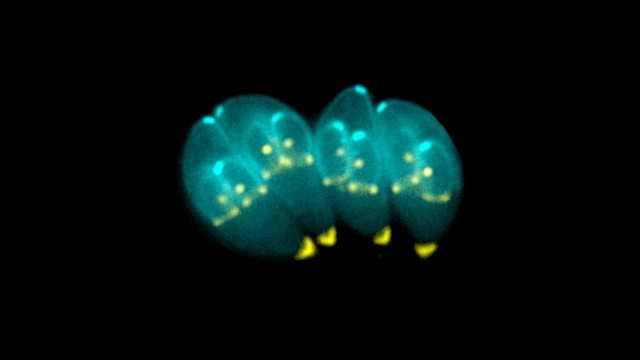Category: Under the Microscope
Marine Parasite of the Month- July 2021
Some parasites can do crazy things, but this month’s parasite can actually change the gender of a crab. A mud crab-specific parasite, this organism is an invasive barnacle, and commonly found in the Chesapeake Bay area as well as the Gulf of Mexico, the Caribbean, and other parts of Florida. It is speculated that they […]
Marine Mammal Parasite of the Month- Answer June 2021
The parasite for this month was Toxoplasma gondii, the toxoplasmosis disease-causing parasite. When marine mammals contract this disease, they can have many different symptoms such as anorexia, increased temperatures, swollen tonsils, and flipper lesions. In a study done by the United States Department of Agriculture, it was found that T. gondii caused mortality in sea […]
Marine Mammal Parasite of the Month- June 2021
This parasite is a protozoan that infects most warm-blooded animals, including humans, and causes the disease toxoplasmosis. As far as marine mammals go, this parasite has been observed in sea otters, manatees, harbor seals, northern fur seals, sea lions, and many cetacean species. Humans can become infected by several routes, including eating under-cooked meat of […]
Marine Mammal Parasite of the Month Answer- April 2021
This parasite is the marine mammal lungworm! Here at NMLC the most common lung worm infections we see present in our seals are Otostrongylus circumlitus and Parafilaroides gymnurus. These are mostly found during routine fecal analysis of our seals, but can also be seen during necropsies as well. Some of the first signs of a […]
Marine Mammal Parasite of the Month- April 2021
This type of parasite is common in pinnipeds and there are two different species commonly seen in the seals here at NMLC. Their life cycle remains a small mystery to researchers as there’s not much information regarding it, but patterns reveal that fish are the perfect intermediate hosts for these parasites. The adult form can […]
Marine Mammal Parasite of the Month- March 2021 Answer
The parasite is known as the Bolbosoma species, a member of the Acanthocephala phylum. Due to its appearance, its common name is “thorny-headed worm”. A Bolbosoma infection can be diagnosed through visible larvae in the fecal matter. An animal with abdominal discomfort can also be in indicator of intestinal worms. Unfortunately, no effective treatment has […]
Marine Mammal Parasite of the Month- March 2021
This parasite is most commonly reported in cetaceans, but some cases has been seen in pinnipeds, fish and rarely humans. It is distinguishable thanks to their longitudinal rows of overlapping hooks on their proboscis, the hollow retractable extremity used to latch onto its host. This parasite can be as small as 1millimeter long or grow […]
Parasite of the Month- Answer December 2020
This parasite is Zalophotrema hepaticum, a species of trematode or fluke. Pinnipeds obtain this parasite through the ingestion of infected fish. Although this species is usually confined to the liver, recent studies have found evidence of this trematode migrating to the brain of sea lions, laying eggs, and causing fatal brain damage. Posted by Meaghan […]
Marine Mammal Parasite of the Month- December 2020
This is a parasite we often find in pinnipeds. Although the most common host is the California sea lion, they are also found in Stellar’s sea lions, northern elephant seals, and Pacific harbor seals. This parasite is usually found in the liver or the adjacent bile duct. It can reach up to 21mm in length […]
Parasite of the Month- Answer November 2020
These ova belong to the genus Diphyllobothridea or the tapeworm. Tapeworms have a specialized scolex with suckers used to attach to the intestines of their host and are transferred to pinnipeds who eat infected fish. Using the fecal ova to identify parasites is important to seal rehabilitation at NMLC. Posted by Meaghan K. […]


